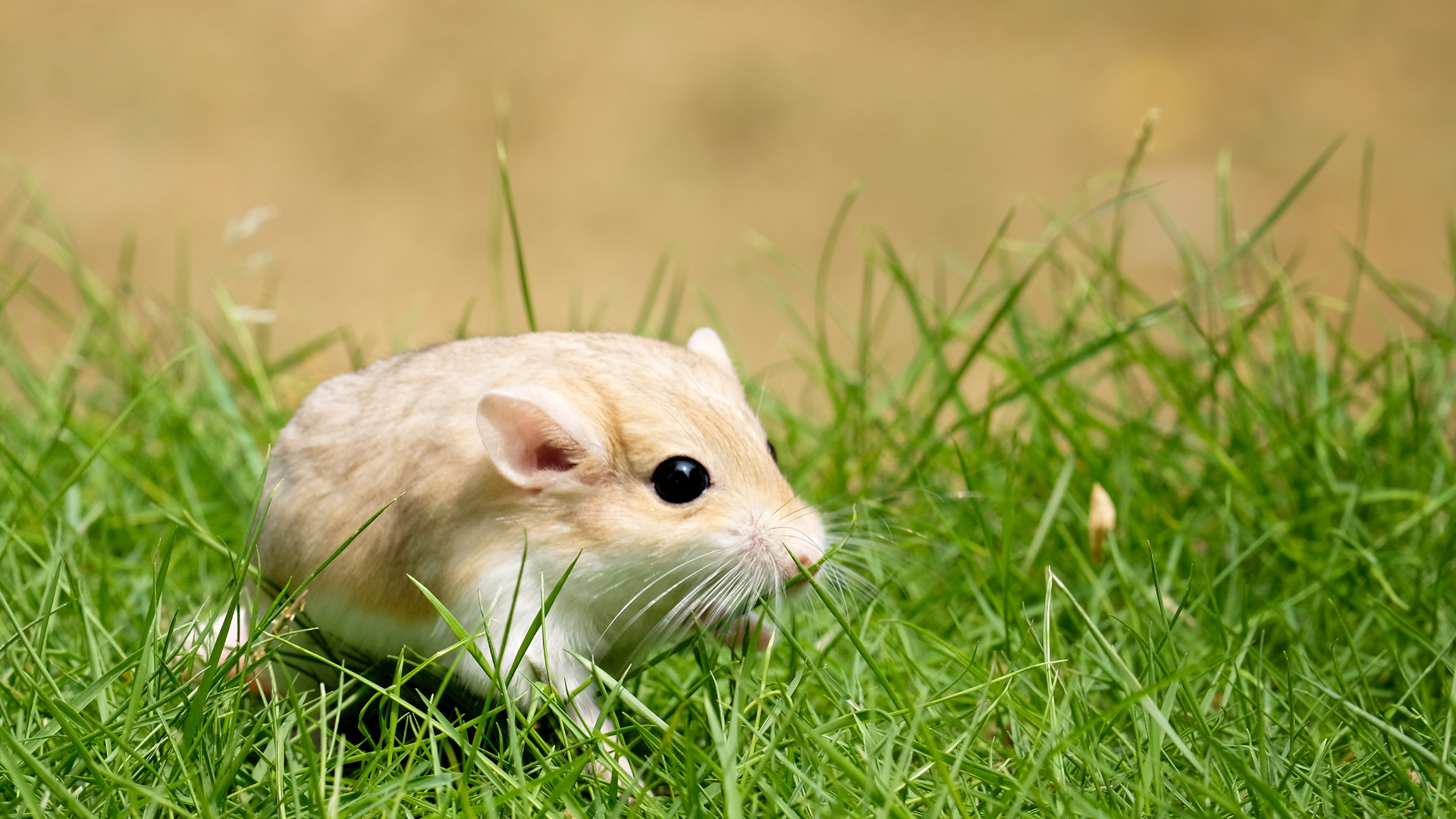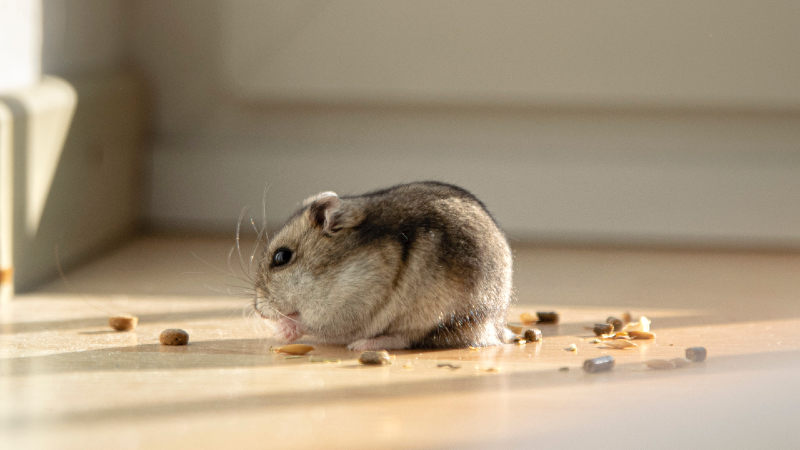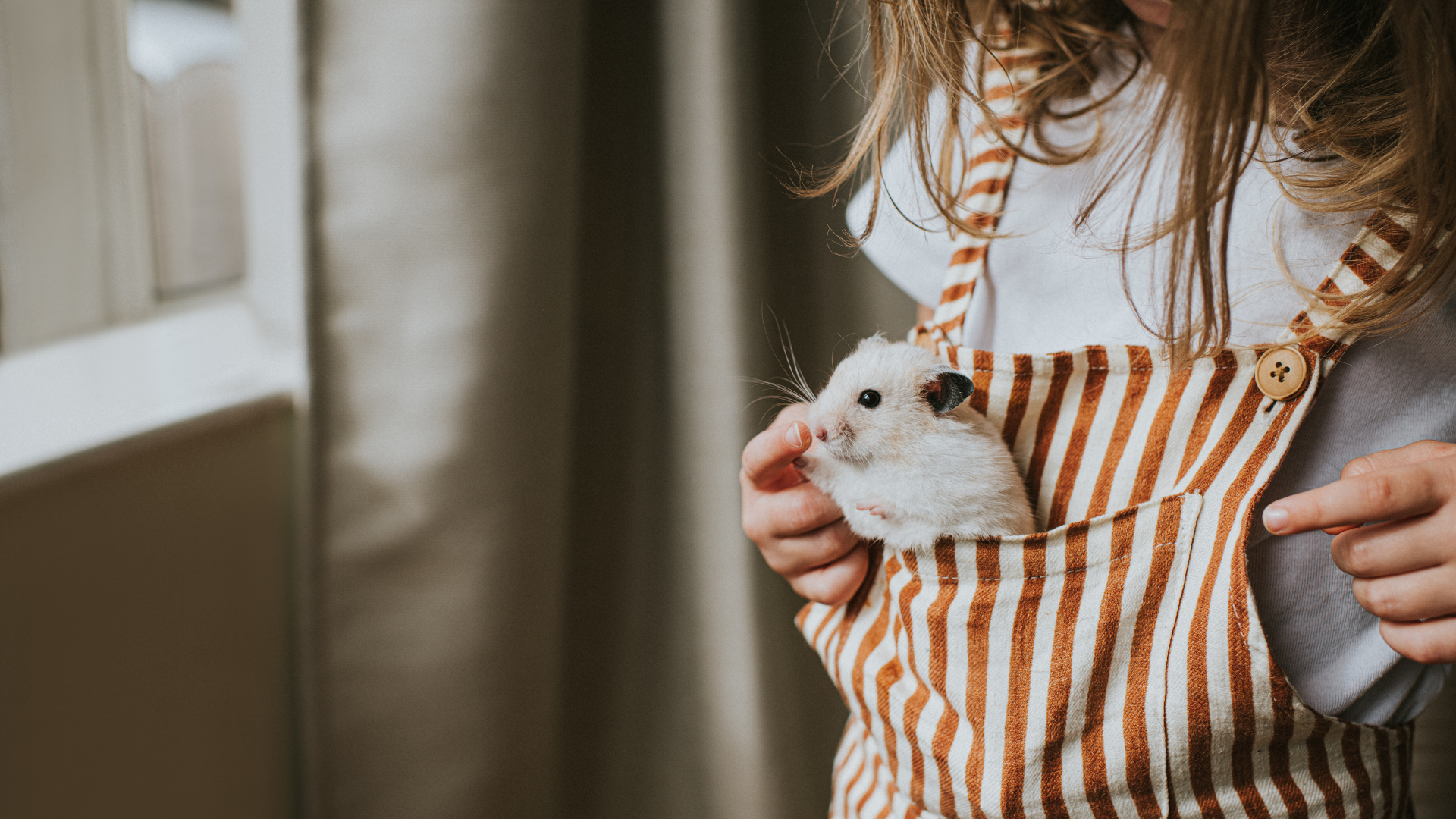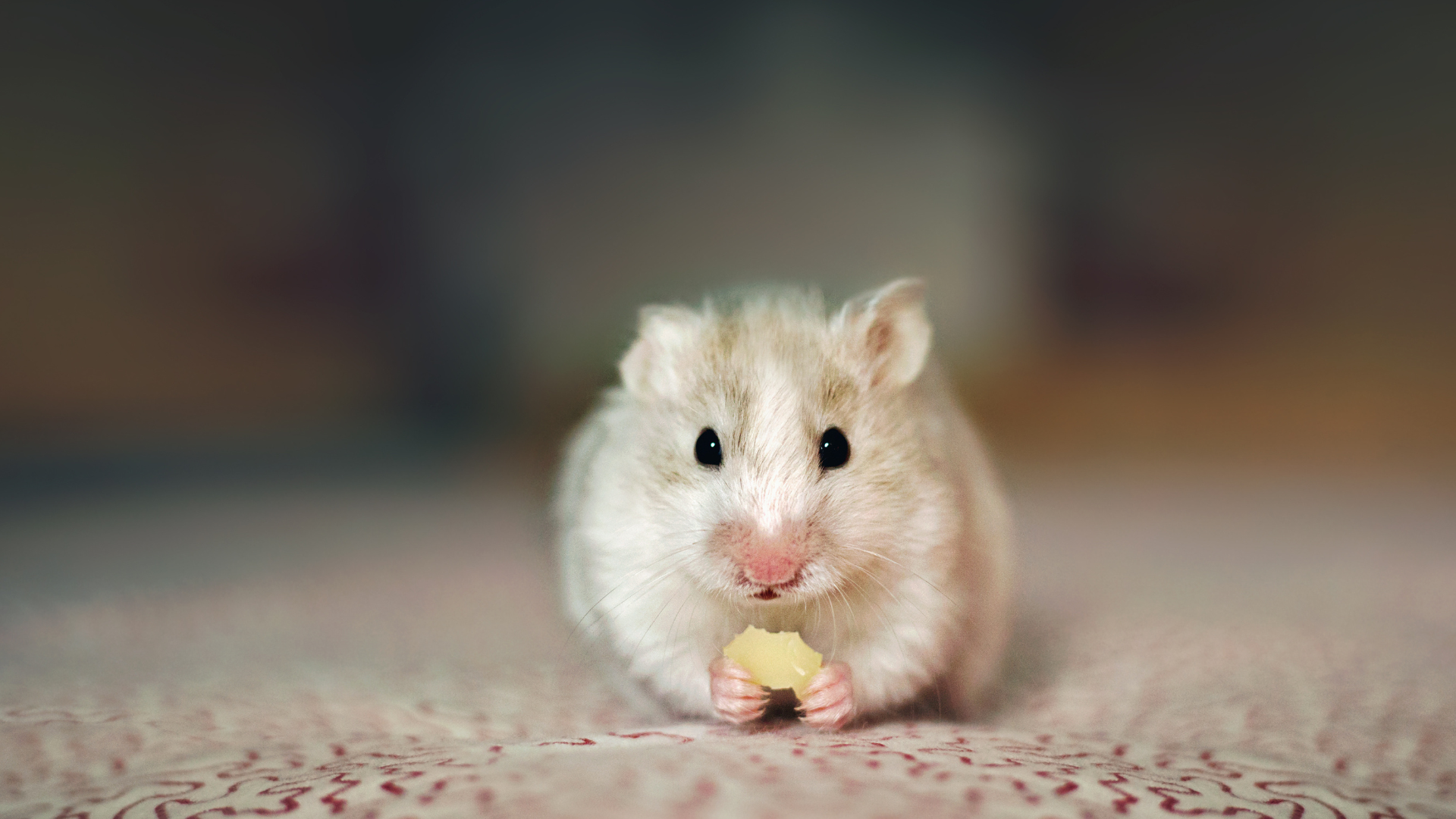How long do hamsters live? Life cycle of a domestic hamster
Wondering, ‘How long do hamsters live?’ We reveal the answer, plus how to give them a long and happy life.

If you’re thinking of getting a pocket pet, then you might be questioning, ‘How long do hamsters live?’ Before you commit to a new furry friend, it’s important to manage your expectations and understand how long they’ll be around for.
Pet hamsters live between 1.5 to 4 years which is considerably less than small pets like rabbits, who can live up to around 12 years. So, if you want a companion for a longer period of time, you might want to keep that in mind.
Below, we reveal which hamster breeds live the longest and how to tell when they’re getting older. We’ve also shared our top tips for keeping them around for longer, like keeping them in the best hamster cage that’s big enough and hygienic.
How long do hamsters live in the wild?
Wild hamsters tend to live longer than pet hamsters if they manage to escape their predators. The Syrian hamster, for example, generally lives between 2-3 years, but can live longer in captivity. The European hamster can live up to eight years in the wild.
How long do hamsters live for as pets?
Pet hamsters tend to live between 1.5 and four years, although some can live longer depending on their care and the species.
These are the average lifespans of pet hamsters by breed:
- Golden/Syrian Hamster – 2-4 years
- Siberian Hamster – Around 2 years
- Chinese Hamster – 2-3 years
- Roborovski Dwarf Hamster – Around 3 years
- Campbell’s Dwarf Russian Hamster – Around 2 years
You might also want to read our guide on the different hamster breeds.
Get the best advice, tips and top tech for your beloved Pets
Life cycle of a domestic hamster
Hamsters do not tend to have very long life cycles. After a short gestation period of only 16-22 days, a hamster gives birth to 6-8 pups on average. The pups are born deaf, blind and hairless. They are, however, one of the few animals born with teeth.
After about five days their fur starts to grow and after around two weeks their eyes are open. Pups are looked after by their mother for around 28 days. At this point mothers tend to be separated from their pups, who become sexually mature from 4-6 weeks.
Males and females are also separated at this stage as breeding is more successful after 10 weeks. Before this hamsters may be not survive. A female hamster can become pregnant again 24 hours after birth. Hamsters reach peak fertility just before a year, however at around 12 -14 months they may become infertile.

What factors affect a hamster's lifespan?
If you want to know how to care for a hamster and ways to help your hamster live longer these are the factors you need to consider:
1. A healthy diet
What can hamsters eat? As omnivores hamsters need a mix of both protein and veg. Do your research and make sure that, whether you’re buying their food or making it yourself, they are receiving the correct amount and all the nutrients they need. A Syrian hamster, for example, requires two teaspoons of food a day; a dwarf hamster needs just one teaspoon.
There are a number of foods that are toxic to hamsters including chocolate, onions and garlic, potatoes and tomato leaves. Certain foods such as iceberg lettuce, peanuts and citrus fruits should also be avoided to keep your hamster healthy.
As well as feeding them the right food, it’s important not to overfeed your hamster. It’s not always necessary to fill their food dish with food if it’s empty as hamsters tend to hide food.
2. Enough exercise
Hamsters not only need exercise to stay healthy, but happy too. The best way to ensure they get enough exercise is to buy them a hamster wheel for their cage.
Hamsters love to run and will happily do so for hours. You can also get climbing toys and monitor playtime outside their cage. This is important because if they don’t get enough exercise, you might find your hamster biting their cage, becoming restless or trying to escape.
While you might think about getting your hamster tunnels and tubes to exercise with, if you do, make sure the tubes are big enough as Syrian hamsters, for example, tend to get stuck and this can be quite traumatic for them.
If the tubes are attached to the walls, make sure they are secure so your hamster does not suffer a fall and injure themselves. Tubes and tunnels can be dangerous if they’re not kept simple. Avoid anything too steep or convoluted.

3. Know how to handle them
The key to a long-lived hamster is a happy one, and by handling your hamster with care you can keep them stress-free and happy. Make sure only a small number of people handle your hamster and that they all know how to do this.
Always approach your hamster slowly, make sure they are awake, and alert and make eye contact before picking them up. Then use two hands (make sure you’ve washed them) – one beneath them and one above them to ensure they are safe.
Here are some ways to keep your hamster happy and some reasons why your hamster is scared of you.
4. Keep other pets away from them
In the wild hamsters have many predators and while your dog or cat may not eat your hamster, they could still kill them by injuring them – even if they’re just trying to play. Make sure your hamster’s cage is secure and that they’re kept away from other pets, especially when they’re outside the cage.
5. The right size cage
How big should a hamster cage be? Cage size is one of the most important factors to ensure the health of your hamster. If their cage is not big enough they can become distressed. When it comes to cage size, bigger is better but you can research the best dimensions for each breed.
Syrian hamsters should have a cage with at least 620 square inches of floor space while dwarf hamsters need at least 450 square inches. If you have more than one hamster, you’ll need double the size cage.
Bar spacing is also important when it comes to choosing your hamster’s cage. You don’t want your hamster escaping through or getting stuck between the bars so research the best bar spacing for different breeds.
Syrian hamsters need no more than 0.5 inches and dwarf hamsters need no more than 0.25 inches of space between the bars.

6. A clean cage
To avoid your hamster getting ill from germs or bacteria, clean their cage regularly. Clear any old food or waste from your hamster’s cage once a day, carry out a deep clean once every one or two weeks including taking everything out of the cage, washing its bedding and wiping the entire cage down with a 50/50 mix of water and vinegar. Read our guide on how to clean a hamster cage.
7. A healthy environment
Lengthen your hamster’s lifespan by developing a healthy environment for them to live in – one that will cause them the least amount of stress. Hamsters do not like loud noises so try to create a quiet, peaceful space for them. The temperature and humidity of their cage is also key.
The ideal temperature for a hamster is between 65 and 75 degrees Fahrenheit and the ideal humidity is about 40 percent. You can check your hamster is happy with the temperature and humidity by making sure they are not sweating, shivering or finding it hard to breathe, losing their energy or appetite or drinking more than usual. Check for signs of stress to ensure a healthy environment. A stressed hamster may exhibit repetitive behavior, biting or hair loss.
Make sure your hamster is comfortable. This includes the right type of bedding made from paper, wood, vegetables or grain as these are absorbent.
They must also lead an enriched life to be healthy and happy. This means providing them with a variety of toys that are safe for them, but also keep them physically and mentally stimulated.
How to tell if your hamster is getting older
Regardless of breed, if your hamster reaches the age of two they are considered old, but there are a number of other signs to show you that they are ageing:
- Hair loss - As hamsters get older they may lose their hair
- Eye problems - Hamsters don’t have great eyesight to start with, but as they age they can suffer from eye problems such as cataracts or even loss of eyesight. If you notice your hamster’s eyes turn more white this could be the case, but they can still use their other senses and lead a happy life.
- Loss of appetite - As your hamster gets older they may lose their appetite or become fussier eaters. This could be because their teeth or digestive system need softer foods. Try steamed broccoli, rice or omelette.
- Less energy - Older hamsters will start to slow down, expending less energy and sleeping more. They may also suffer from arthritis and have more trouble moving, bumping into their cage more often.
- Problems with their teeth - Hamsters’ teeth grow throughout their lives. Usually their teeth are filed down when they chew on food, but as they get older and start eating softer foods they may need to be taken to the vet to have their teeth filed down. Older hamster teeth may also break more easily.
- Cleaning habits - Not only will an older hamster groom itself less as it gets more tired, but their toilet habits will change. An older hamster may urinate in various spots in their cage including their bedding. However there may be fewer droppings if your hamster is eating less. Make sure you check their digestion and if they need to go see a vet.
We've also written a guide on the most common hamster illnesses and do hamsters hibernate.
Who is the longest living hamster ever recorded?
The longest living hamster ever recorded lived until he was 4.5 years old and made it into the Guinness Book of World Records. We know that he was owned by Karen Smeaten and lived in Tyne & Wear, but his name has not been recorded.
Want more advice? In this feature, we answer, ‘Why is my hamster sleeping in the corner of their cage and we answer the question, Do hamsters get lonely?
- Megan MilsteadStaff Writer

